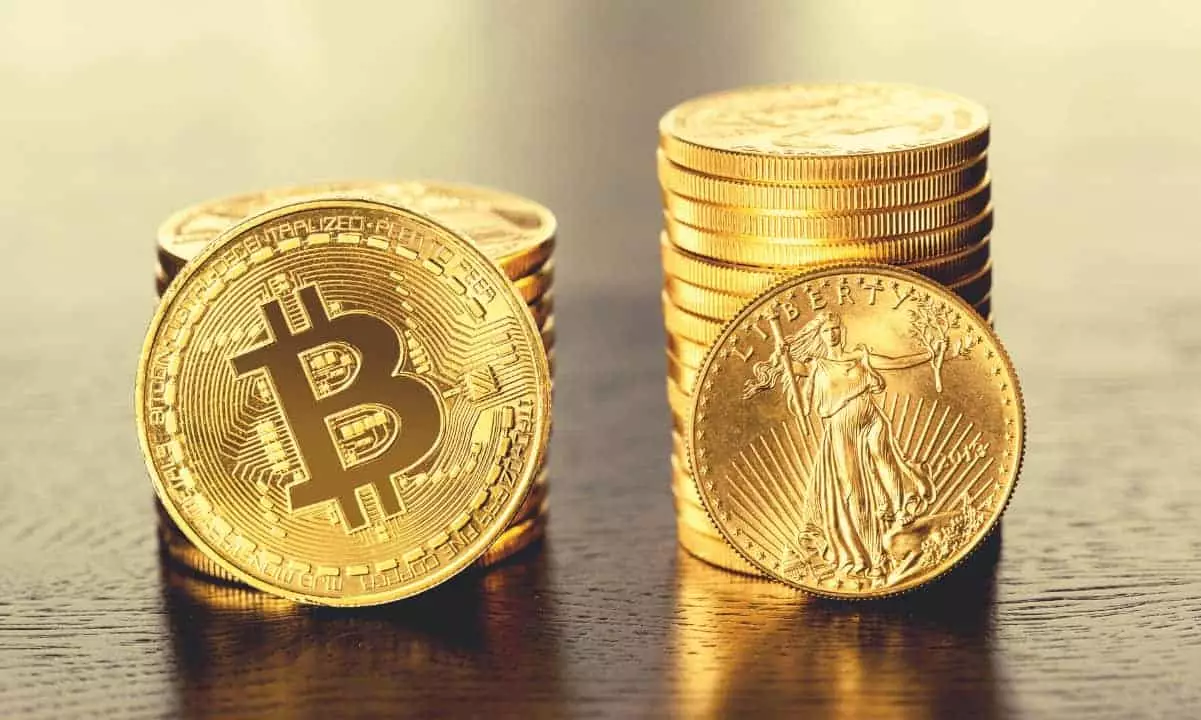Last week, gold crossed an unprecedented threshold, soaring past the $3,000 mark, a symbolic milestone reminiscent of the financial crises that have often propelled safe-haven assets into the limelight. The moment feels almost epoch-defining, marking a shift not only in market dynamics but in investor psyche. Analysts from The Kobeissi Letter have posited that this strike isn’t mere happenstance but a culmination of several pivotal factors that are reshaping the investment landscape.
While gold has always held a revered spot in investment portfolios, this latest ascension poses profound questions about the long-term stability of fiat currencies. Governments across the globe have taken to excessive spending, with the U.S. alone disbursing an eye-popping $7 trillion annually—levels comparable only to those seen during emergency pandemic responses. This reckless fiscal behavior erodes confidence, igniting an urgent flight toward gold and its age-old stability.
Geopolitical Tensions and Inflation: The Perfect Storm
In the crucible of global uncertainty, geopolitical tensions have reached an almost feverish state. The specter of conflict looms large, and when combined with soaring inflation, it creates a scenario where traditional assets are increasingly spurned for more tangible values. As investors grapple with tumultuous economic signals—skyrocketing inflation, rising interest rates, and the ominous specter of recession—gold emerges as a shimmering beacon of reliability.
What’s striking this time is the nearly manic pace at which central banks are accumulating gold. Reports indicate that over the past three years, purchases have surpassed the 1,000-tonne threshold consecutively. This institutional buying frenzy effectively strangles supply and fuels the relentless price climb. It appears clear that the age-old adage of buying low and selling high is becoming obsolete as savvy investors embrace the long-term potential of this metal amid chaotic tides.
The Unique Resilience of Gold
Peter Schiff, a vocal supporter of gold and critic of cryptocurrencies, recently drew attention to gold’s resilience against a robust U.S. dollar. Traditionally, a strong dollar would dampen gold prices, but recent trends illustrate a divergence. Gold now seems to operate independently of the dollar’s fluctuations—an anomaly that could herald the beginning of a new economic paradigm where traditional correlations dissolve.
Such resilience is particularly noteworthy when juxtaposed against Bitcoin’s performance, the digital asset often hailed as “digital gold.” Despite Bitcoin’s appeal, it has recently dropped significantly in value, suggesting that it behaves more like a speculative tech stock plagued by volatility rather than a safe haven. This begs the question: can Bitcoin really hold its own against gold in the long game?
The Evolution of Safe-Haven Assets
The debate around Bitcoin versus gold is not merely theoretical; it reveals fundamental differences in investor psychology. Gold has over 4,000 years of history as a store of value, while Bitcoin barely scrapes 16 years. The recent statistics shared by Schiff underline the crux of this argument: where one Bitcoin once commanded 36.3 ounces of gold in 2021, that ratio has now diminished to 27.7 ounces.
The cryptocurrency’s fluctuations mirror market volatility more closely than gold’s historical stability. The fear of recession compounded with tech sector weaknesses could translate into larger losses for Bitcoin, while gold retains its status as a safety net. Observers and market watchers have begun to question the cryptocurrency’s viability as a true alternative to traditional stores of value.
As gold continues to shatter records and capture the imaginations of investors driven by caution, it is evident that the landscape is shifting. While Bitcoin garners headlines on the speculation front, gold appeals to those navigating toward stability in an uncertain world. It’s a fascinating moment in economic history, where the question of wealth preservation now resounds louder than that of chasing the next big thing. With traditional market correlations unraveling, the astute investor would do well to reevaluate assumptions about both gold’s place in their portfolio and the substance behind emerging digital assets.

